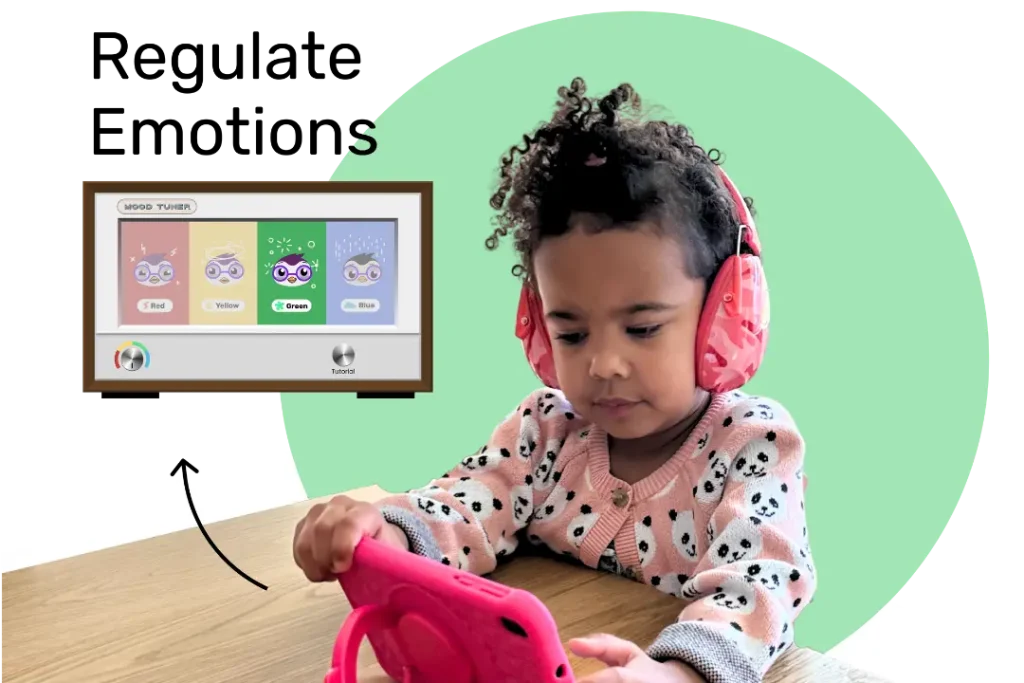As parents, we’ve all had those moments. The sudden meltdown over homework, the bedtime frenzy, the public tantrum. It’s tough for us but even more challenging for our kids, especially those who are neurodivergent or have thinking and learning differences. Wouldn’t it be great to have a toolkit of calming exercises for anxiety at our disposal? Well, you’re in luck. We’ve put together a list of five simple, practical calming exercises that can help diffuse anxiety and promote a sense of calm in your household.
Table of Contents
1. Deep Breathing: The Power of Oxygen
Let’s kick things off with deep breathing. It’s a simple technique, but keep that from fooling you. Deep breathing can be a game-changer when it comes to calming exercises for anxiety. By taking slow, deep breaths, we can slow our heart rate and lower our blood pressure, creating a feeling of calm.
- Make it fun for kids using a pinwheel or blowing bubbles.
- The goal is to take slow, deep breaths, filling the lungs completely and then exhaling slowly.
- This technique is easy to learn and can be used anywhere.

2. Progressive Muscle Relaxation: Tension Release
Next up, we have progressive muscle relaxation. This technique involves tensing and then releasing different muscle groups. It’s a fantastic way for kids to become more aware of their bodies and to understand how tension and relaxation feel.
- Start with the toes and work your way up to the head, tensing and relaxing each muscle group in turn.
- Remember, it’s important to ensure this exercise is done in a safe and comfortable environment.
- Apps like Goally can help guide your child through this process, making it easier and more fun.
3. Mindfulness: Living in the Moment
Mindfulness is another powerful tool in our calming exercises toolkit. It’s all about focusing on the present moment without judgment. This can be a real game-changer for kids dealing with anxiety.
- For kids, this could mean focusing on the taste and texture of a piece of fruit, the feeling of the wind on their face, or the sound of their own breathing.
- It’s a simple yet effective way to bring the mind back from anxious thoughts and into the present Moment.
- Goally has a range of mindfulness exercises specifically designed for kids, making it a great resource for parents.

Read more: Teaching Kids How to Keep Calm
4. Guided Imagery: A Mental Vacation
Fourth on our list is guided imagery. This involves visualizing a peaceful, calming place or situation. For kids, this could be a favorite holiday spot, a peaceful forest, or floating on a cloud.
- Guided imagery can be done with the help of apps or online videos, or you can guide your child through it yourself.
- The key is to engage all the senses, creating a fully immersive, calming experience.
- Remember, the goal is not to escape reality but to create a sense of calm that can help manage anxiety.
5. Yoga: Mind-Body Connection
Last but certainly not least, we have yoga. Yoga combines physical postures, breathing exercises, and meditation, making it a comprehensive, calming exercise.
- For kids, try incorporating fun animal poses or a story-based approach.
- Yoga not only promotes calm but also improves flexibility, strength, and coordination.
- There are plenty of kid-friendly yoga videos online, or you could consider enrolling your child in a local yoga class.
Goally | Kid’s Tablet for Building Emotional Regulation Skills
Is your child struggling with understanding and managing their emotions? Goally teaches emotional regulation skills in a fun and interactive way!

The Mood Tuner app encourages kids to look inwards and identify their feelings, helping them understand what’s going on inside. Once they’ve recognized their emotions, they can choose from a variety of exercises designed to help them self-regulate and find their balance.
In short, anxiety can be a real challenge for many kids, particularly those who are neurodivergent or have thinking and learning differences. However, with these calming exercises for anxiety, you now have a toolkit to help your child navigate these challenging moments. Remember, it’s not about perfection but about progress. It’s about helping your child develop coping strategies that they can carry into adulthood. So, why give these exercises a try? After all, a little calm can go a long way.

Goally
We help parents teach their kids life skills, like doing bedtime and morning independently. Backed by science, we incorporate evidence-based practices and expert-informed designs in all of our apps and content.





